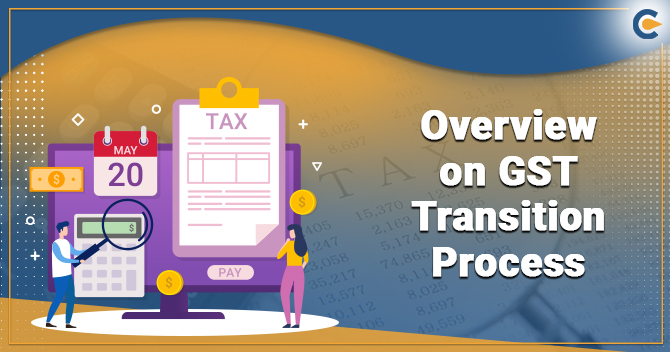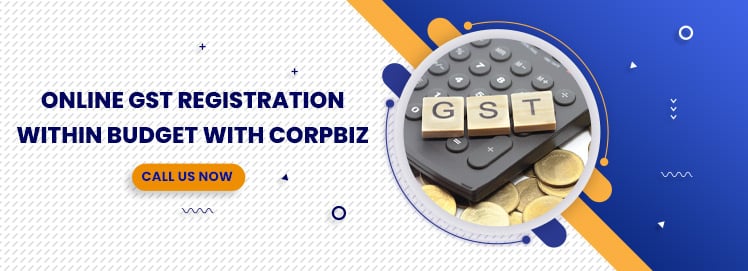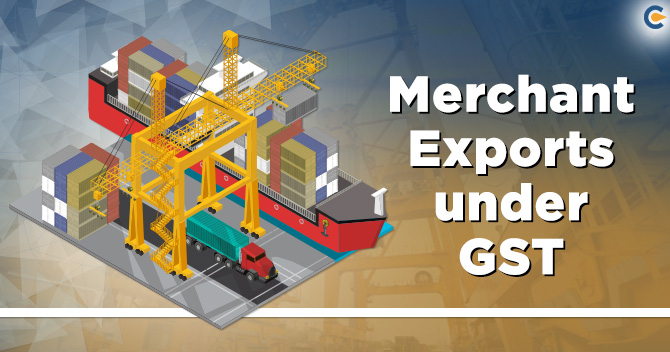There is a lot of discussion regarding Goods and Services Tax and its impact on small and medium businesses in India. Large businesses are already formulating themselves for the change that they have to make in their current system to comply with the new Goods and Services Tax (GST) regime.
There are certain doubts among all the small and medium enterprises regarding the preparation that will be required for GST Transition Process. In this article, we will discuss how one must prepare them for the migration to the new tax structure from the current one.
Latest Update related to GST Transition Process
The CBIC has notified on May 18th, 2020, as the date from which the Section 128 of the Finance Act of 2020 will come into force. Section 128 of the Finance Act affects the amended section 140 of the Central Goods and Services Tax (CGST) Act, 2017[1], which explicates the time limit for demanding transitional input tax credit under the Act.
GST Transition Process
Goods and Services Tax consolidates multiple taxes into one. It is essential to have rules in place to make sure that a registered business runs smoothly for GST Transition Process. The three types of GST Transition Process are:


Input Tax Credit
Certain Provisions have been made for the smooth transition of Input Tax Credit available under Service Tax, Excise Duty or VAT to GST. A registered dealer who selected for the composition scheme will not be allowed to carry forward the ITC available in the previous tax regime.
Some of the instances where ITC transition provisions will be applicable are as follows:-
1. Closing balance of Credit on Inputs
The closing balance of ITC according to the last return filed before GST can be taken as credit in the GST regime. After coming of GST in the year 2017, GST Transition Process started.
The credit will be accessible only if the returns for the last six months from January 2017 to June 2017 were filed in the prior regime (i.e. Service Tax returns, Excise and VAT had been filed).
Form TRAN 1 has to be filed by December 27th, 2017 to carry forward the ITC. Also, TRAN 1 can be corrected only once.
2. Credit on Capital Goods
Before Goods and Services Tax, only a part of input tax paid on Capital Goods could be taken as credit.
For example, if ITC on Capital Goods purchased in the year 2016-17 is INR 10,000. 50% i.e. INR 5,000 can be claimed as Input Tax Credit in the same year and balance INR 5000 can be demanded in the next year.
In such cases, there may be some amount of unused credit available on the capital goods. This un-used credit can be carried forwarded to GST by entering the particulars in Form TRAN 1.
3. Credit on Stock
A service provider or a manufacturer who has goods left in the closing stock on which the duty has been paid can also take the credit for the same. The merchant has to declare the stock of such goods on the GST Portal.
The merchant should have the invoices for claiming Input Tax credit & the invoices must be less than one year old.
What if you don’t have Invoices?
Service providers or Manufacturers, who do not have an invoice to prove payment of tax duty are not allowed to claim the credit under the GST regime.
Only dealers can claim credit in case invoice is unavailable, subject to the following conditions:
- The credit can be taken by the dealer only if the benefit of the same is passed on to the final consumer
- The stock should be identified separately based on the following rate slab, which are as follows:-
| Rate of GST on Goods | Inter-state Credit to IGST | Intrastate Credit to CGST |
| 18 % or more | 30% | 60% |
| Less than 18% | 20% | 40% |
Registered individuals under GST who were not registered under any previous law
Every individual who is:
- A registered merchant and was unregistered under previous law
- Who was involved in the manufacture of exempted goods or exempted services
- Who was offering contract service and was availing for abatement
- A first stage merchant or a second stage merchant
- A registered importer can also enjoy Input Tax Credit of inputs in stock held on 1st July.
The following conditions should be fulfilled –
- Inputs or goods are utilized for making taxable supplies
- Such advantages is passed on by way of abridged prices to the recipient
- The taxable individual is eligible for the input tax credit on such inputs.
- The individual in possession of invoices evidencing payment of duty under the earlier law
- The invoices must be not older than 12 months.
- The provider of services is not eligible for any abatement under GST
Input tax credit on Goods Sent before 1st July
ITC can be claimed by the dealer/manufacturer for those goods received after the appointed day, the tax on which has been previously paid under previous law. Above credits will only be permitted if the invoice/tax paying document is recorded in the accounts of such individual within 1st August 2017. A 30-day extension may be allowed by the competent authority on grounds of sufficient cause for delay.
Credit of Additional Customs or Excise Duty
This is probably the most perilous provision of transition under GST regime. Under the present tax regime, a merchant is not permitted an Input Tax credit of excise duty or additional customs against excise.
However, things have changed in the new GST regime. Under the new GST regime, supply of such goods falls under GST but a credit of excise duty or additional custom duty will not be permitted.
The instant result of this would be the imposing of GST on goods which are already being taxed under the existing procedure, without any credit obtainability. This may lead to distortion and cascading limits of prices.
This can also result in stock returns from merchants and traders to the manufacturers before the prescribed day, and further making a new purchase successive to that day. Such situations may lead to fright among manufacturers and in turn affect their returns and profits.
Refunds and Arrears
Any appeals/claims pending for the refund on the due amount of tax, CENVAT credit, or interest paid must be disposed of as per the previous laws. The GST Transition Process for refunds and arrears will be applicable after 1st July, 2017. Moreover, any amount payable under previous law will be treated as arrears of Goods and Services Tax and be recovered as per the GST provisions.
Job Work
No tax must be payable on Inputs, semi-finished products removed for job work for carrying certain processes and returned on or after 1st of July
Conditions when there is no tax payable:
- Goods returned to the factory within six months from 1st of July which is extendable for a maximum period of two months
- Goods held by job worker declared in Form TRANS-1
- Supply of semi-finished goods done only on payment of tax in India or the goods exported out of India within six months from 1st of July which is extendable by not more than two months
Taxes are not imposed if finished goods were removed before the 1st of July for carrying certain processes and are returned within six months from the 1st of July. ITC will be recovered if the goods are not returned within six months
Credit Distribution by Input Service Distributor
GST Transition Process will be applicable in cases where the service was received prior to the 1st of July and the invoices received on or after the 1st of July. Input Service Distributor will be eligible to distribute ITC under GST.
Composition Dealer
When a registered trader who was paying tax under composition scheme previously but is a normal taxpayer under the GST can claim credit of inputs available as on 1st of July by satisfying some conditions –
- The Input is used for the taxable supply
- Registered individual is eligible for Input Tax Credit under GST
- Invoice or other duty payment receipts are available
- Such invoices are not more than 12 months old
GST Transition Process will be applicable on new tax regime where the taxpayer has to keep himself/herself aware regarding the implications that the migration from the old regime to the new regime may have. At this time of transition, such migration is anticipated to have a large impact as the limit of the turnover under GST is INR 50 lakh, as against the existing INR 10 lakh.
Therefore, it would be fair and safe to assume that many taxpayers will move from being regular taxpayers to paying taxes under the composition scheme.
The opposite of this would be wherein merchants, who are under the composition scheme, would be transformed into a being regular taxpayers. This may happen if the goods they are dealing in do not qualify under the exemption list of the new regime.
Conclusion
Goods and Services Tax combines multiple taxes into one. It is necessary to have rules & regulation in place to make sure that a registered business runs smoothly for GST Transition Process in India. Certain Provisions have been made for the smooth transition of Input Tax Credit available under Service Tax, Excise Duty or VAT to GST. A registered dealer who selected for the composition scheme will not be allowed to carry forward the ITC available in the previous tax regime.
Read our article:List of Goods and Services where GST is Applicable: Latest Rates













